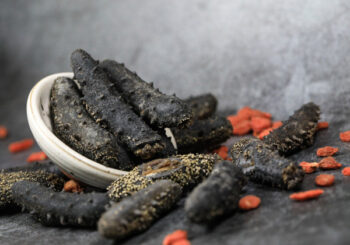By John Patterson
Staff Writer for Wake Up World
In the realm of natural remedies, it appears that the sea cucumber, a beloved delicacy in Asian cuisine, has unveiled a new facet of its healing potential. Recent scientific research conducted by the University of South Australia has uncovered that this marine marvel can play a pivotal role in preventing diabetes.
By harnessing the power of processed dried sea cucumber with salt extracts, scientists have discovered a promising avenue for inhibiting the formation of Advanced Glycation End products (AGEs), a compound associated with an increased risk of diabetes. But what exactly does this groundbreaking study reveal? And what is the true potential of sea cucumbers in combating this widespread disease?
[pro_ad_display_adzone id=”110028″]
The AGE Connection: A Silent Threat Unveiled
Diabetes, a global health concern affecting millions, has long been associated with the accumulation of AGEs in the body. These compounds form when proteins and fats combine with sugars in the bloodstream. In elevated levels, AGEs become catalysts for diabetic complications such as heart disease, Alzheimer’s, Parkinson’s, kidney disease, and cancer. Until now, a therapeutic agent to counter the formation of AGEs has remained elusive. However, the research conducted by Dr Permal Deo and his team offers a glimmer of hope by highlighting the potential of sea cucumbers in inhibiting AGE formation.
Sea Cucumbers: A Treasure Trove of Healing Compounds
Renowned for their anti-inflammatory and antioxidant properties, sea cucumbers have long been recognized in traditional medicine for their therapeutic potential. Driven by this knowledge, the researchers sought to explore the bioactive compounds present in sea cucumbers and their ability to inhibit AGEs. The results were astonishing.
By utilizing processed dried sea cucumber with salt extracts and collagen, the researchers observed a significant inhibition of AGEs. This remarkable outcome was accompanied by a reduction in sugar-related metabolites within the body, thereby decreasing the risk of diabetes. The findings demonstrate that sea cucumbers possess novel compounds with the potential to act as preventive agents against diabetic complications.
Unlocking the Future of Diabetes Prevention
With nearly 1.3 million Australians and a staggering 422 million individuals globally affected by diabetes, the urgency to find effective preventive measures cannot be understated. Fortunately, the research conducted by the University of South Australia sheds light on sea cucumbers as a possible functional food product to combat diabetes and its associated complications.
While lifestyle and dietary changes remain crucial in preventing type 2 diabetes, the incorporation of sea cucumbers into our diets holds promising potential. As Dr Deo explains, “These results provide sound evidence that sea cucumbers could be developed as a functional food product to help battle the onset of diabetes and diabetic complications.”
Conclusion
The latest scientific research conducted by the University of South Australia has unearthed the extraordinary potential of sea cucumbers in preventing diabetes and its associated complications. Through their ability to inhibit the formation of AGEs, sea cucumbers offer a natural and promising approach to combating this widespread disease. As we continue to navigate the path towards holistic well-being, the ancient wisdom of nature once again reveals its healing powers, bringing us closer to a healthier, diabetes-free world.
Reference:
- Hoi Y. Wong, Emma L. Jaunay, Wai C. D. Lau, Brock Peake, Ravinesh Ram, Paul C. Southgate, Permal Deo. Holothuria scabra Jaegar 1833 (Sandfish) extracts and collagens modulate protein?bound N ? ?carboxymethyllysine, N ? ?carboxyethyllysine and meth. International Journal of Food Science & Technology, 2023; 58 (4): 1962 DOI: 10.1111/ijfs.16341
About the author:
John Patterson is an avid writer and researcher who delves into the latest scientific research. With an insatiable curiosity, he translates complex concepts into accessible narratives, allowing readers to embark on a journey of discovery. Through his work, John bridges the gap between experts and the public, igniting curiosity and inspiring meaningful conversations about scientific breakthroughs.
[pro_ad_display_adzone id=”110027″]







